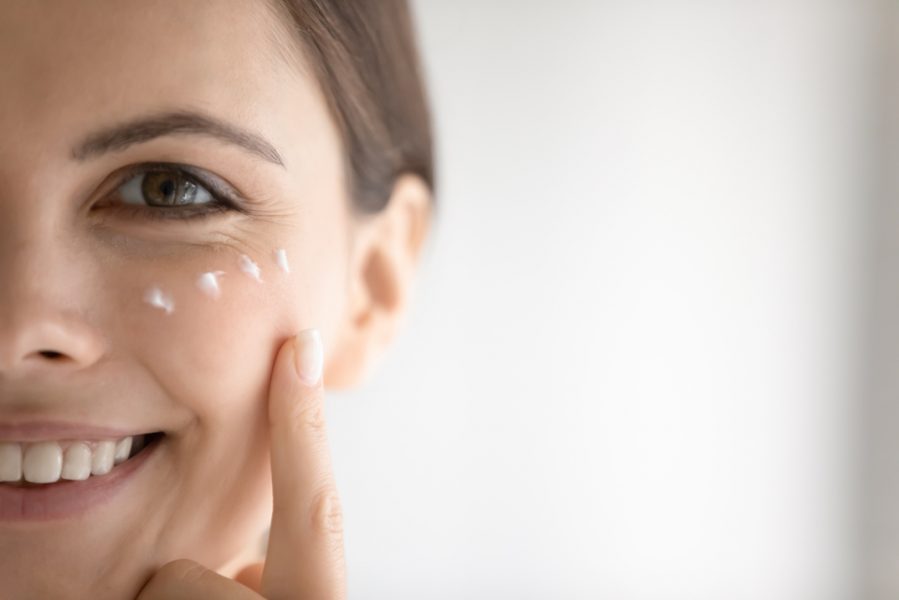People who suffer from skin allergies are affected by substances and factors that do not typically affect most other individuals, these substances may include perfumes, dyes, and certain plants, therefore, dear reader, to learn more about skin allergies and everything related to them, continue reading this article.
What is skin allergy?
Skin allergy is an immune response that occurs when the skin is exposed to something that is usually harmless. It can cause skin irritation, skin rash, itching, burning, redness, and other symptoms.
What are the symptoms of skin allergy?
The symptoms of skin allergy vary from person to person, depending on the type and severity of the allergy. However, most of these symptoms appear within minutes of exposure to the allergen.
Common symptoms of skin allergies, seen in most types, include:
- Skin rash.
- Skin itching.
- Swelling and redness of the affected area.
- The appearance of blisters or raised bumps.
- Skin peeling.
- Skin cracking.
What are the main types of skin allergies?
Skin allergies can be categorized into several types, which we will discuss in detail:
-
Atopic Dermatitis
Atopic Dermatitis, known as Eczema, is one of the most common skin conditions, especially in children, affecting one in every five children, while only one in every ten adults is concerned.
Symptoms often appear as a rash on the cheeks or scalp in infants, whereas older children and adults may experience a rash in the skin folds of the elbows and behind the knees and on the face, neck, hands, feet, and back.
The cause of Eczema is believed to be related to a weakened and leaky skin barrier, leading to dryness and increased susceptibility to irritation and inflammation due to various external factors.
-
Urticaria
Urticaria, or hives, is one of the types of skin allergies that can affect individuals of all age groups. It is characterized by itchy, raised red bumps on the skin that vary in shape and size.
Urticaria can be divided into two categories based on its duration of impact on the individual:
-
- Acute Urticaria: Lasting for a period not exceeding 6 weeks.
- Chronic Urticaria: Lasting for more than 6 weeks
-
Angioedema
Angioedema is the occurrence of swelling in the deep layers of the skin without itching, affecting various areas such as eyelids, mouth, or genitalia.
It has been found that angioedema may occur alongside hives in some cases or occur independently in others. Angioedema can be classified into two types based on the duration of its impact on the individual:
-
- Acute Angioedema: Refers to a short-term condition lasting for only minutes or hours, usually occurring as an allergic reaction to certain medications or foods.
- Chronic Recurrent Angioedema: Involves repeated episodes of the condition after an extended period, lasting for hours or several days. In most cases, there is
- no specific known cause for its occurrence.
It is important to note that there is a rare genetic condition known as Hereditary Angioedema (HAE), which requires immediate medical consultation when it occurs. It is a severe condition characterized by swelling in various body parts, including hands, feet, intestinal wall, face, and airways.
-
Contact dermatitis
Contact dermatitis occurs when the skin directly contacts an irritant substance, triggering an immune reaction. Some of these irritants include:
-
- Cosmetics.
- Hair dyes.
- Certain metals, such as nickel.
- Some topical medications.
- Dental materials used by dentists.
Contact dermatitis commonly occurs in exposed and more vulnerable areas, such as hands, feet, and the face, especially the eyelids, and neck. The accompanying skin rash is described to be similar to the rash seen in Eczema, but it is localized to the area that came in contact with the irritant substance.
What are the main causes of skin allergy?
Skin allergies occur due to a robust immune system reaction to certain triggers or specific factors. Some of these triggers or allergens include:
-
Nickel:
A metal used in the production of jewelry, belts, and various other items.
-
Certain Plants:
For example, exposure to the oil produced by damaged or bruised poison ivy leaves can cause skin irritation and rash.
-
Latex:
A material used in industries such as glove and condom manufacturing.
-
Clothing:
Allergens can be present in the fabric itself, the materials used for fabric treatment, or even the dyes applied to the clothing.
-
Some Chemicals:
Chemicals found in hair dyes, cosmetics, shampoos, and other products may cause allergies in some individuals.
-
Fragrances:
Fragrances are essential in perfume and deodorants, added to body and facial soaps, and may be present in products advertised as unscented or for sensitive skin.
-
Medications:
Some over-the-counter creams and ointments, such as those used for burns, minor wounds, insect bites, and others, may contribute to skin issues.
How is a skin allergy diagnosed?
The doctor will perform the following to diagnose skin allergies:
- Gather detailed information about the symptoms, such as their timing, type, and duration.
- Conduct some tests, such as blood tests, urine tests, and stool tests, and may also request skin tests.
How is skin allergy treated?
In most cases, skin allergy symptoms disappear within a week or two of developing, as an initial therapeutic step, patients are advised to avoid exposure to irritants and allergens, home care guidelines can also be followed to alleviate allergy symptoms at home, and if needed, patients can seek medical advice from a doctor to prescribe appropriate medical treatments:
-
Home care
If you experience discomfort from itching or skin rash, you can consider the following instructions:
-
- Use cold compresses or take cool baths to soothe the skin rash.
- Soak the affected area with an oatmeal mixture diluted in warm water.
- Use an anti-itch cream, such as hydrocortisone or calamine lotion, which can be obtained over the counter.
- Wear loose and non-irritating clothing.
-
Medical treatments
If home care measures do not provide relief from skin allergy symptoms, it is essential to consult a doctor who may prescribe some medications, such as:
-
- Antihistamines.
- Steroid creams or ointments.
- Antibiotics in some cases.
When should you see a doctor?
We advise you to visit a doctor in the following situations:
- Experiencing difficulty in breathing.
- Developing a rash all over the body.
- Presence of pus (indicating inflammation in the affected area) or bleeding from the skin rash.
- Experiencing allergy symptoms for the first time.
- Lack of improvement in the skin rash and itching after two-three weeks.
Download Alma Health application now!






